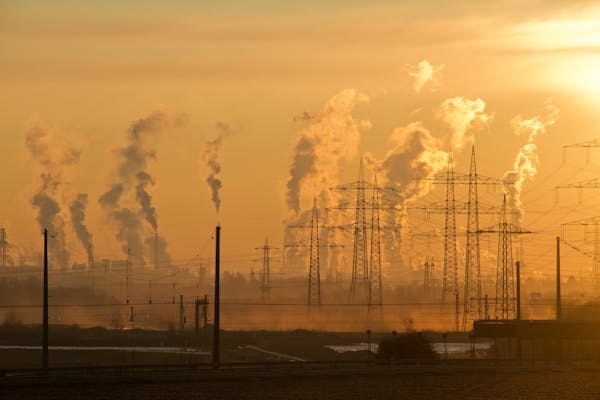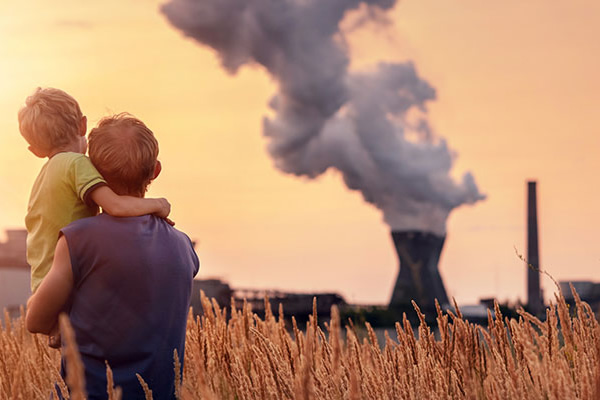Understanding The Effects of Air Pollution
Types of Air Pollutants

Air pollutants come in various forms, including particulate matter (PM), nitrogen dioxide (NO2), sulfur dioxide (SO2), ozone (O3), carbon monoxide (CO), and volatile organic compounds (VOCs). These pollutants can originate from both natural sources, such as wildfires and volcanic eruptions, and human activities, including industrial processes, transportation, and energy production.
Impact on Respiratory Health

The respiratory system is particularly vulnerable to the effects of air pollution because pollutants are directly inhaled into the lungs. Here are some of the ways in which air pollution can affect respiratory health:
- Exacerbation of Asthma: Asthma is a chronic respiratory condition characterized by inflammation and narrowing of the airways. Exposure to air pollutants can trigger asthma attacks in susceptible individuals, leading to symptoms such as wheezing, coughing, chest tightness, and difficulty breathing. Pollutants like NO2 and PM have been linked to increased asthma prevalence and exacerbations.
- Chronic Obstructive Pulmonary Disease (COPD): COPD is a progressive lung disease that includes conditions such as chronic bronchitis and emphysema. Long-term exposure to air pollution, particularly PM and SO2, can worsen symptoms and accelerate the progression of COPD. Air pollution is also a significant risk factor for the development of COPD in non-smokers.
- Respiratory Infections: Air pollution can weaken the immune system’s defenses, making individuals more susceptible to respiratory infections such as influenza, pneumonia, and bronchitis. Particulate matter and ozone can impair the function of immune cells in the lungs, making it easier for pathogens to take hold and cause infection.
- Lung Cancer: Prolonged exposure to certain air pollutants, notably fine particulate matter (PM2.5) and airborne carcinogens like benzene and formaldehyde, has been associated with an increased risk of lung cancer. These pollutants can penetrate deep into the lungs and cause DNA damage, potentially leading to the development of cancerous cells over time.
- Reduced Lung Function: Long-term exposure to air pollution can impair lung development in children and adolescents, leading to reduced lung function and respiratory capacity. This effect is particularly concerning in urban areas with high levels of air pollution, where children may grow up with compromised respiratory health.
- Cardiovascular Effects: While primarily affecting the respiratory system, air pollution can also have indirect effects on cardiovascular health. Inhalation of pollutants like PM and NO2 can trigger systemic inflammation and oxidative stress, contributing to the development of cardiovascular diseases such as hypertension, stroke, and heart failure.
Vulnerable Populations
Certain groups of people are more susceptible to the health effects of air pollution:
- Children: Children have developing respiratory systems and breathe more rapidly than adults, making them more vulnerable to the harmful effects of air pollution. Exposure during childhood can have long-lasting implications for respiratory health and overall well-being.
- Elderly Individuals: Older adults, especially those with pre-existing respiratory or cardiovascular conditions, are at increased risk of complications from air pollution exposure. Age-related changes in lung function and immune function can exacerbate the impact of pollutants on respiratory health.
- Individuals with Pre-existing Conditions: People with asthma, COPD, or other chronic respiratory diseases are more sensitive to changes in air quality and are at greater risk of experiencing exacerbations or worsening of their symptoms due to pollution exposure.
- Socioeconomically Disadvantaged Communities: Low-income communities and minority populations are often disproportionately exposed to higher levels of air pollution due to factors such as proximity to industrial facilities, highways, and other sources of pollution. These communities may also have limited access to healthcare resources, exacerbating the health disparities associated with air pollution exposure.
Mitigation Strategies
Addressing the issue of air pollution requires concerted efforts at the local, national, and global levels. Here are some strategies to mitigate the harmful effects of air pollution on respiratory health:
- Reduce Emissions: Implementing policies and regulations to reduce emissions from industrial sources, vehicles, and power plants is essential for improving air quality. This can include transitioning to cleaner energy sources, improving fuel efficiency standards, and promoting the use of public transportation.
- Promote Clean Energy: Investing in renewable energy sources such as wind, solar, and hydroelectric power can help reduce reliance on fossil fuels and lower emissions of air pollutants. Encouraging energy efficiency measures in buildings and industries can also contribute to cleaner air and improved respiratory health.
- Urban Planning: Designing cities with pedestrian-friendly infrastructure, green spaces, and efficient public transportation systems can help reduce vehicle emissions and improve air quality. Implementing zoning regulations to limit industrial pollution near residential areas can also protect vulnerable populations from harmful exposures.
- Public Awareness and Education: Educating the public about the health effects of air pollution and providing information on how to reduce exposure can empower individuals to take proactive measures to protect their respiratory health. This can include promoting behaviors such as using air purifiers, avoiding outdoor exercise during times of poor air quality, and advocating for clean air policies.
- Healthcare Interventions: Healthcare providers play a critical role in identifying and managing respiratory conditions exacerbated by air pollution. Enhancing access to healthcare services, particularly in underserved communities, can help ensure that individuals receive timely diagnosis and treatment for respiratory problems related to air pollution exposure.
- International Cooperation: Air pollution is a global issue that requires cooperation and collaboration across borders. International agreements and initiatives aimed at reducing greenhouse gas emissions and air pollutant levels, such as the Paris Agreement and the Clean Air Act, are crucial for addressing the root causes of air pollution and protecting respiratory health on a global scale.
Conclusion
Air pollution poses a significant threat to respiratory health, contributing to a wide range of respiratory problems including asthma, COPD, respiratory infections, and lung cancer. Vulnerable populations, including children, the elderly, and individuals with pre-existing conditions, are at greater risk of experiencing adverse health effects from pollution exposure. Mitigating the harmful effects of air pollution requires multifaceted approaches, including reducing emissions, promoting clean energy, urban planning, public awareness, healthcare interventions, and international cooperation. By taking proactive measures to improve air quality, we can protect respiratory health and enhance overall well-being for current and future generations.



